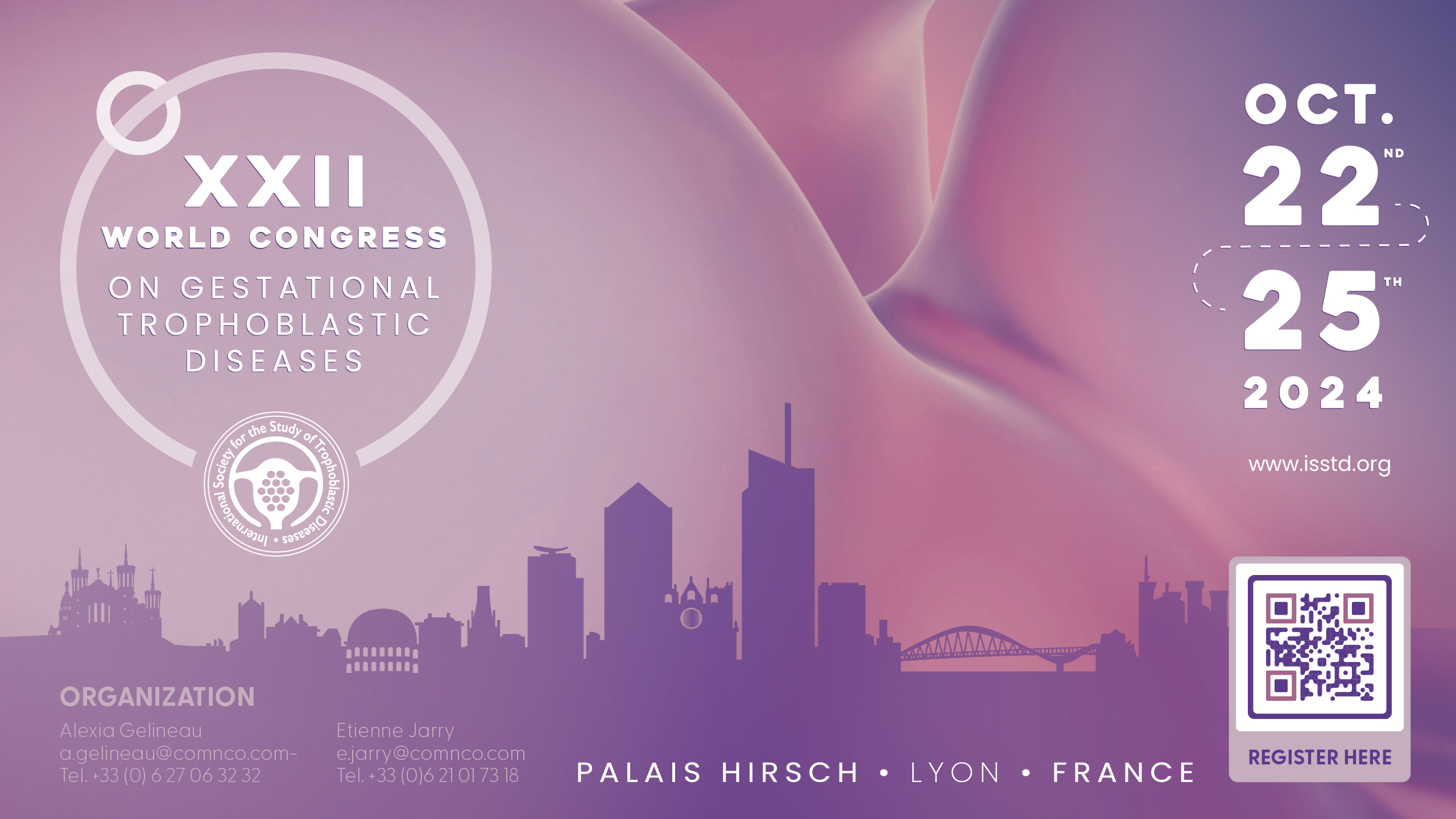Étude MILO - Cancer Ovaire
Factsheet Study (Fiche descriptive de l'étude)
Ovarian study (Étude ovaire)
MILO
Study Title (Titre de l'étude)
MILO : The MILO Study (MEK Inhibitor in Low-grade Serous Ovarian Cancer):A Multinational,Randomized,Open-label Phase 3 Study of MEK162 vs.Physician'sChoice Chemotherapy in Patients with Recurrent or Persistent Low-grade Serous Carcinomasof the Ovary, Fallopian Tube or Primary Peritoneum.
Status (Statut)
The recruitment of this study is finished (le recrutement de cette étude est terminé).
Promoter (Promoteur)
ARRAY laboratory (Laboratoire)
Goal (But)
In patients with recurrent or persistent low-grade serous (LGS) carcinomas of the ovary, fallopian tube or primary peritoneum:
Primary
- Demonstrate superior efficacy (increased progression-free survival [PFS]) of MEK162 vs. physician's choice of selected chemotherapies (liposomal doxorubicin, paclitaxel and topotecan)
Key Secondary
- Obtain additional estimates of the efficacy (including OS) of MEK162 vs. physician's choice of selected chemotherapies
- Characterize the safety profile of MEK162 vs. physician's choice of selected chemotherapies
- Assess the effect on global health status of MEK162 vs. physician's choice of selected chemotherapies
- Characterize the plasma PK of MEK162 in this patient population
- During the crossover period, after failure of physician's choice chemotherapy in the randomized period:
- Assess the efficacy of MEK162
- Characterize the safety profile of MEK162
- Assess the effect on global health status of MEK162
Phase
Phase 3
Type of patient (Type de patiente)
Inclusion criteria (Critères inclusion)
Patients must meet all of the following criteria at Screening to be eligible for randomization into the study:
1. Diagnosis of LGS carcinoma of the ovary, fallopian tube or primary peritoneum (invasive micropapillary serous carcinoma or invasive grade 1 serous carcinoma), confirmed histologically and verified by central pathology review.
2. Recurrent or persistent disease that has progressed (defined as radiological and/or clinical progression; an increase in cancer antigen [CA]-125 alone is not sufficient) on or after last therapy (i.e., chemotherapy, hormonal therapy, surgery) and is not amenable to potentially curative intent surgery, as determined by the patient's treating physician. Patients who have achieved a CR following last therapy and who subsequently experience a return of cancer cells after last therapy are said to have recurrent disease. Persistent disease refers to residual cancer growths or cells that persist during and following last therapy.
3. Must have received at least 1 prior platinum-based chemotherapy regimen but have received no more than 3 lines of prior chemotherapy regimens, with no limit to the number of lines of prior hormonal therapy. Front-line therapy may include neoadjuvant and adjuvant therapy and will be counted as 1 prior systemic regimen. Biological therapy (e.g., bevacizumab) administered as a single agent is considered a prior systemic regimen and not a prior chemotherapy regimen. Maintenance therapy is not considered its own regimen but should be included with the regimen that it follows.
4. Measurable disease, as defined by RECIST, Version 1.1, per BICR.
5. Availability of archival tumor sample (excisional or core biopsy) for confirmation of LGS carcinoma diagnosis. If adequate archival tumor sample is not available, willingness to consent to tissue biopsy.
6. Suitable for treatment with at least one of the physician's choice chemotherapy options (liposomal doxorubicin, paclitaxel or topotecan) as determined by the Investigator, given the patient's medical history, prior treatment(s), availability and approval of the physician's choice chemotherapy options for treatment of ovarian cancer within a given country, and other relevant factors.
7. Female ≥ 18 years of age at time of informed consent.
8. Eastern Cooperative Oncology Group (ECOG) performance status (PS) of 0 or 1.
9. Recovery from any clinically significant toxicity from prior chemotherapy, radiotherapy, hormonal therapy or immunotherapy (excluding infertility, alopecia or Grade 1 neuropathy).
10. Adequate hematopoietic, hepatic and renal function defined as follows:
a. Absolute neutrophil count (ANC) ≥ 1.5 × 109/L;
b. Hemoglobin ≥ 9.0 g/dL;
c. Platelet count ≥ 100 × 109/L;
d. Alanine aminotransferase and AST ≤ 2.5 × the upper limit of normal (ULN) or, if patient has documented liver metastases, ≤ 5 × ULN;
e. Total bilirubin ≤ 2 × ULN;
f. Serum creatinine ≤ 1.5 × ULN.
11. Adequate cardiac function:
a. Left ventricular ejection fraction ≥ 50% as determined by a MUGA scan or ECHO;
b. Mean triplicate QT interval corrected for heart rate using Fridericia's formula (QTcF) value ≤ 480 msec.
12. Patients of childbearing potential must have a negative serum beta-human chorionic gonadotropin (β-HCG) test
13. Patients of childbearing potential must agree to use a highly effective method of contraception as defined in Section 5.3.1.
14. Willingness and ability to comply with scheduled visits, treatment plan, laboratory tests and other study procedures.
15. Provide a personally signed and dated informed consent form (ICF) prior to initiation of any study-related procedures that are not considered standard of care
Except criteria (Critères exclusion)
Patients meeting any of the following criteria at Screening are ineligible for randomization into the study:
1. History or current evidence of retinal vein occlusion (RVO) or current risk factors for RVO (e.g., uncontrolled glaucoma or ocular hypertension, history of hyperviscosity or hypercoagulability syndromes).
2. Prior therapy with a MEK inhibitor or BRAF inhibitor.
3. History of Gilbert's syndrome.
4. Impaired cardiovascular function or clinically significant cardiovascular diseases, including any of the following:
a. History of acute myocardial infarction, acute coronary syndromes (including unstable angina, coronary artery bypass graft [CABG], coronary angioplasty or stenting) within 6 months prior to Screening;
b. Symptomatic congestive heart failure, history or current evidence of clinically significant cardiac arrhythmia and/or conduction abnormality within 6 months prior to Screening except atrial fibrillation and paroxysmal supraventricular tachycardia.
5. Uncontrolled arterial hypertension despite medical treatment.
6. Patients who have neuromuscular disorders that are associated with elevated CK (e.g., inflammatory myopathies, muscular dystrophy, amyotrophic lateral sclerosis, spinal muscular atrophy).
7. Patients who are planning on embarking on a new strenuous exercise regimen after first dose of study treatment (i.e., muscular activities, such as strenuous exercise, that can result in significant increases in plasma CK levels).
8. Uncontrolled or symptomatic brain metastases that are not stable or require steroids, are potentially life-threatening or have required radiation within 28 days prior to starting study drug.
9. Concomitant malignancies or previous malignancies with less than a 5-year disease-free interval at the time of randomization; patients with adequately resected basal or squamous cell carcinoma of the skin, carcinoma in situ of the cervix or ductal carcinoma in situ may be enrolled irrespective of the time of diagnosis.
10. Medical, psychiatric, cognitive or other conditions that compromise the patient's ability to understand the patient information, provide informed consent, comply with the study protocol or complete the study.
11. Any severe concurrent disease or condition (e.g., active systemic infection, cardiac arrhythmia) that, in the judgment of the Investigator, would make the patient inappropriate for study participation.
12. Gastrointestinal abnormalities including an inability to take oral medication, requirement for IV alimentation, active peptic ulcer, or prior surgical procedures affecting absorption.
13. Known positive serology for the human immunodeficiency virus (HIV), active hepatitis B and/or active hepatitis C.
14. Treatment with a cyclical chemotherapy within a period of time that is less than the cycle length used for that treatment (e.g., 6 weeks for nitrosourea, mitomycin C) prior to starting study drug.
15. Treatment with a biologic therapy (e.g., antibodies) or anticancer hormonal therapy within 28 days prior to starting study drug.
16. Treatment with continuous or intermittent small-molecule therapeutics within 5 half-lives (t1/2) of the agent, or within 28 days prior to starting study drug where t1/2 is unknown.
17. Treatment with any investigational agent(s) within a period of time that is less than the cycle length used for that treatment or within 28 days prior to starting study drug, whichever is shorter.
18. Treatment with prior radiotherapy within 21 days prior to starting study drug; however, if the radiation portal covered ≤ 10% of the bone marrow reserve, the patient may be enrolled irrespective of the end date of radiotherapy.
19. Any major surgery where adequate wound healing has not occurred prior to randomization.
20. Pregnancy or breast feeding
21. Prior randomization into this clinical study.
Number of patients to recruited (Nombre de patientes à recruter)
Approximately 140 centers in North America, European, Australia
Approximately 360 patientes (international)
Primary endpoint (Critère principal d’évaluation)
Primary
- Progression-free survival as determined by the blinded independent central review (BICR). The local Investigator assessments will be used as supportive analyses
Secondary
- Overall survival
- Objective response rate (ORR) as defined by the Response Evaluation Criteria in Solid Tumors (RECIST), Version 1.1
- Duration of response (DOR)
- Disease control rate (DCR), defined as having achieved a best response of complete response (CR) or partial response (PR), or stable disease (SD) documented at Week 24 or later
- Incidence and severity of adverse events (AEs), graded according to the National Cancer Institute Common Terminology Criteria for Changes in clinical laboratory parameters
- Assessment by the quality-of-life (QOL) questionnaires European Organization for Research and Treatment of Cancer (EORTC) QLQ-C30, EORTC QLQ-OV28 and Functional Assessment of Cancer Therapy (FACT)/Gynecologic Oncology Group (GOG)-Neurotoxicity (NTX)
- Plasma concentration-time profiles and model-based PK parameters of MEK162 (and metabolite AR00426032, if feasible) in a subset of the patients randomized to receive MEK162
- During the crossover period, after failure of physician's choice chemotherapy in the randomized period: o Progression-free survival as determined by local Investigator assessments
- Objective response rate as defined by RECIST, Version 1.1
- Duration of response
- Incidence and severity of AEs, graded according to the NCI CTCAE, Version 4.03
- Changes in clinical laboratory parameters
- Assessment by the QOL questionnaires EORTC QLQ-C30, EORTC QLQ-OV28 and FACT/GOG-NTX
Exploratory
In tumor tissue, if available and as feasible:
- Mutations in cancer-associated and chemotherapy-metabolism-related genes
- Levels and activation states of apoptosis-related proteins and associated messenger ribonucleic acid (mRNA) transcripts
- Levels and activation states of rat sarcoma viral oncogene (RAS)/v-Raf murine sarcoma viral oncogene (RAF)/mitogen-activated protein kinase kinase (MEK)/extracellular signal-regulated kinase (ERK) signaling pathway proteins, and associated mRNA transcripts and regulatory molecules
- In blood samples, as feasible:
- Genetic variant analysis of the UGT1A1 gene in a subset of the patients randomized to receive MEK162







